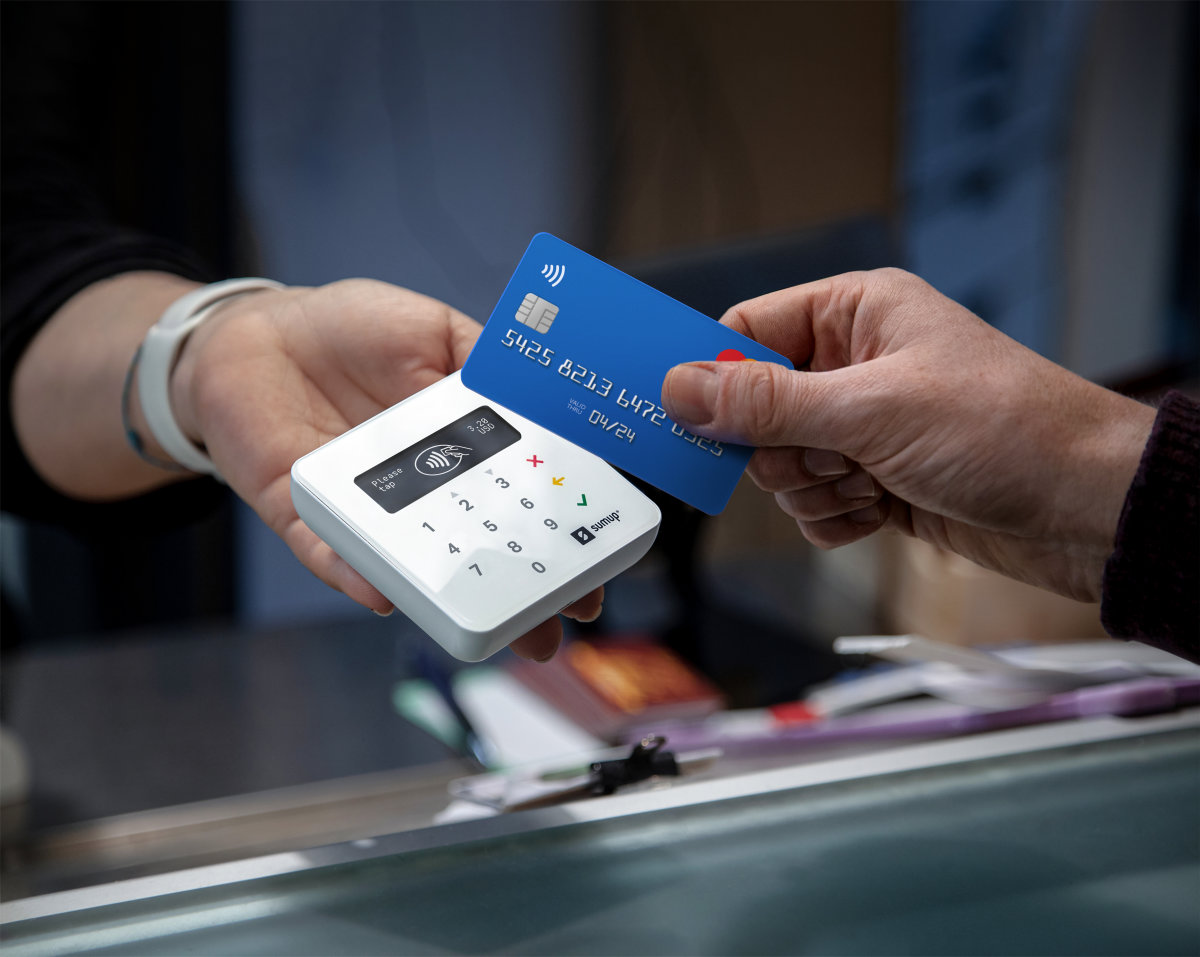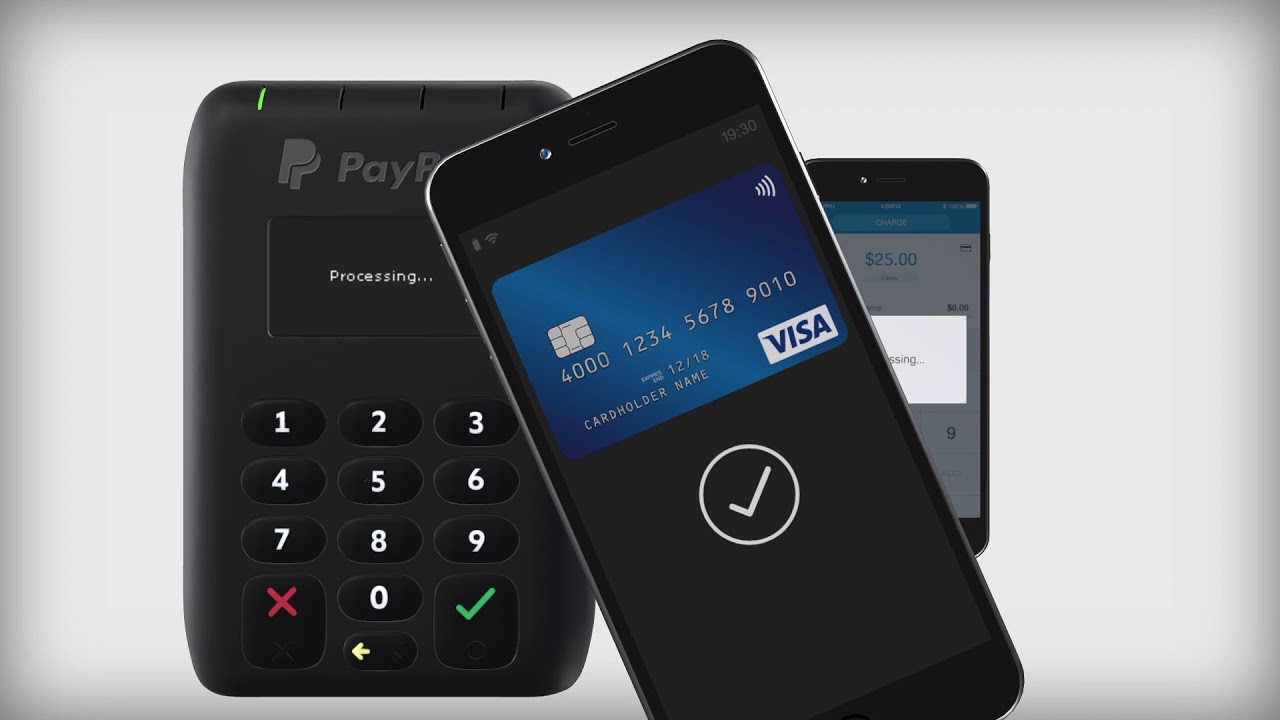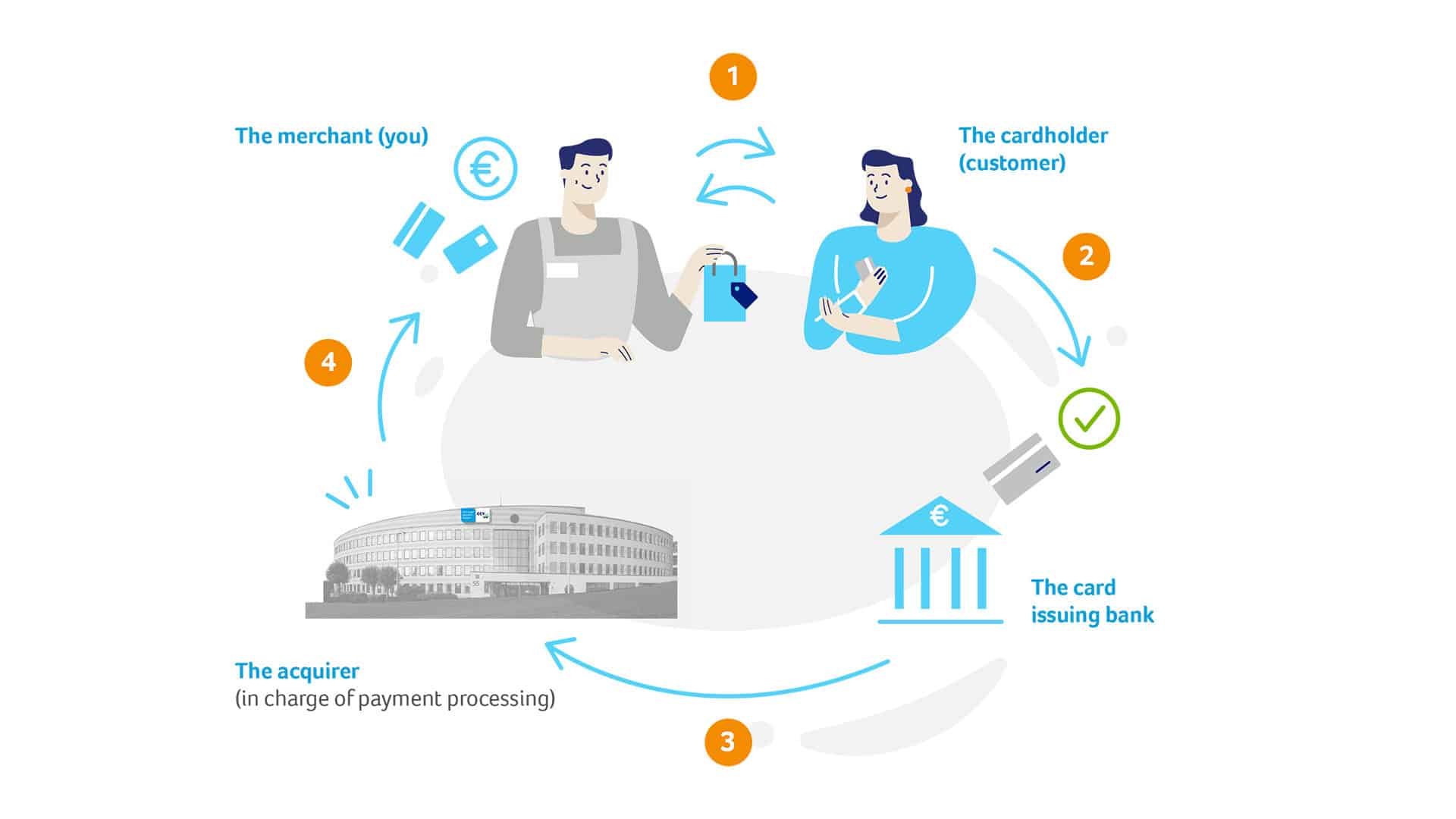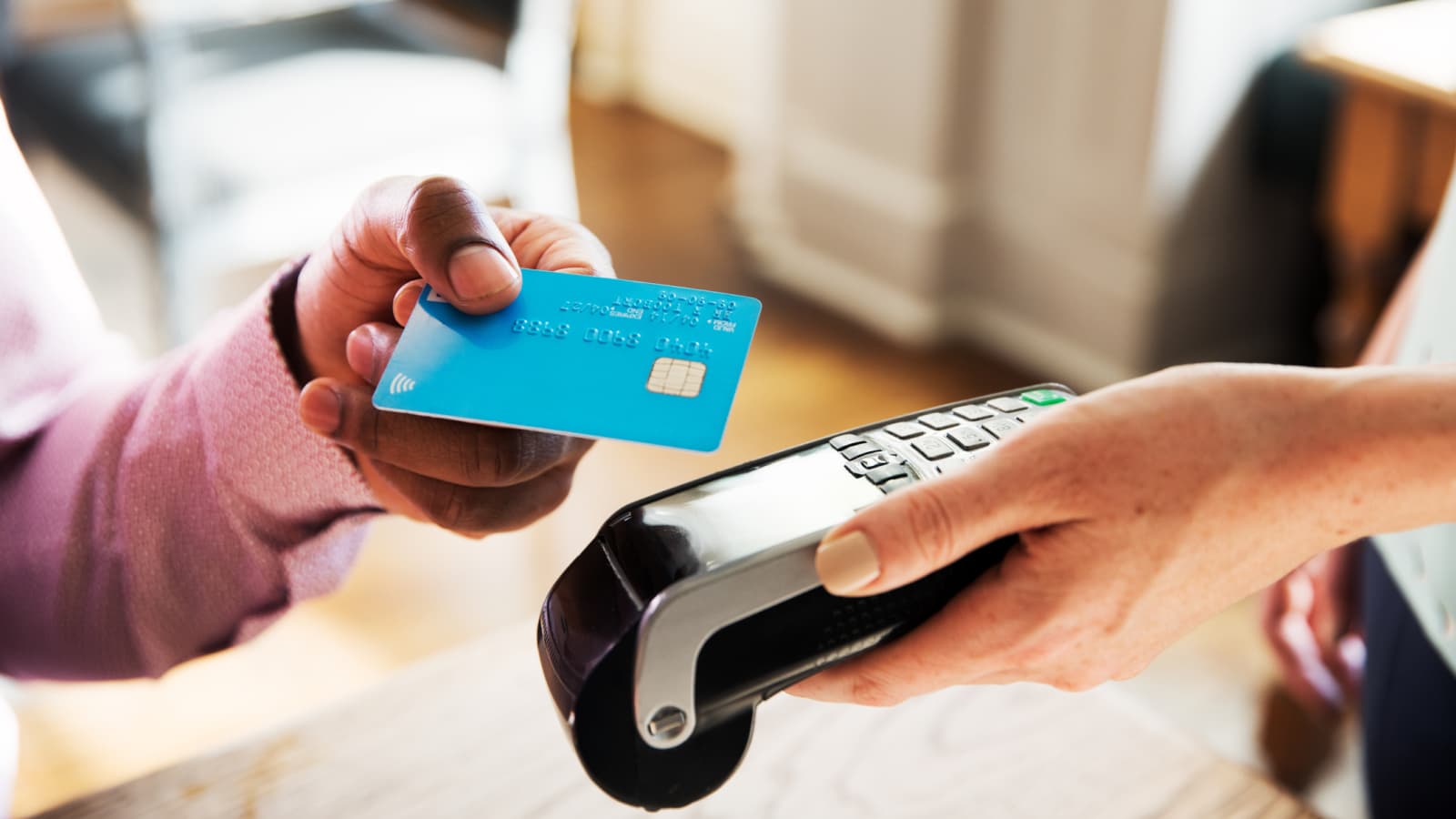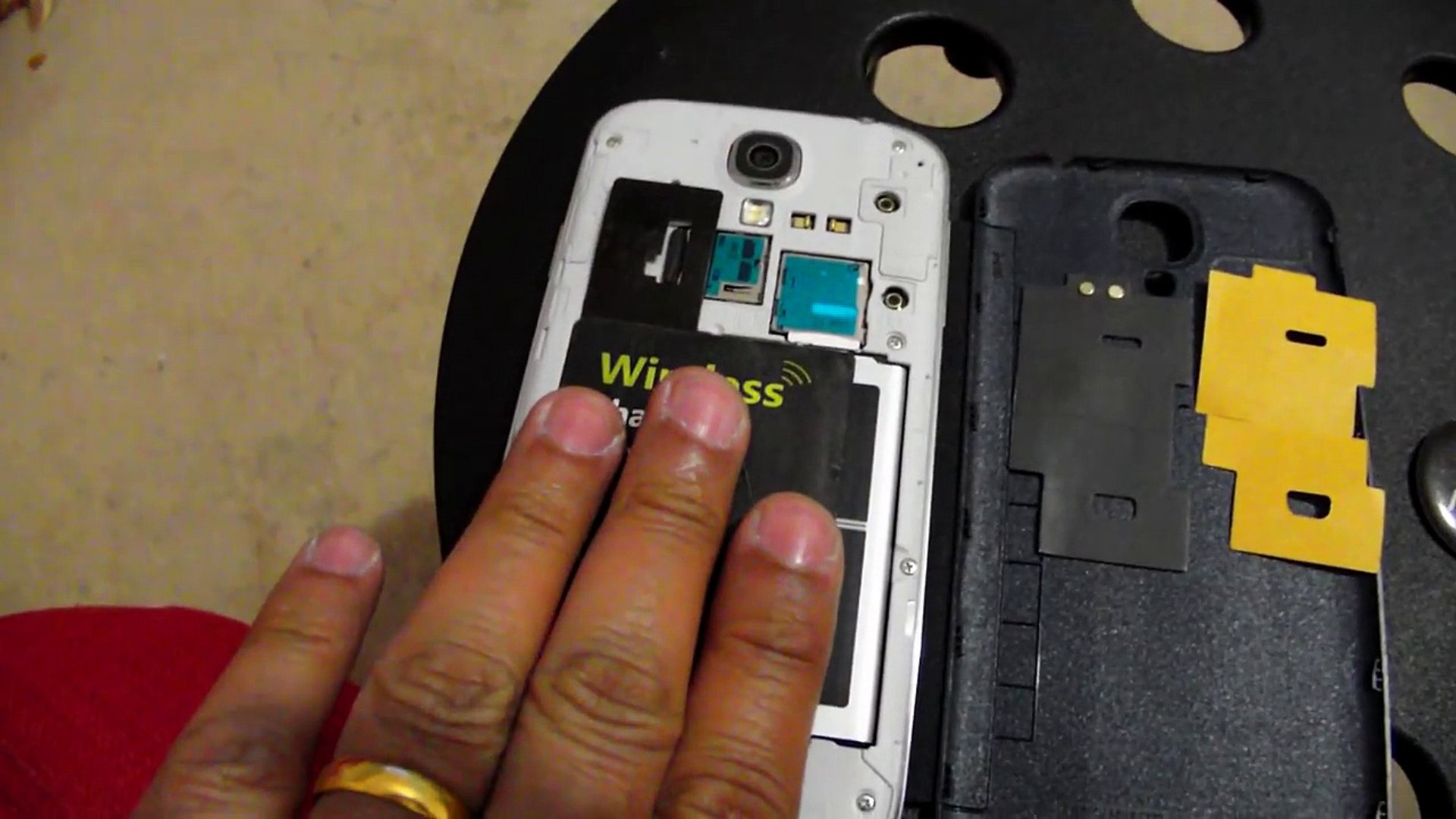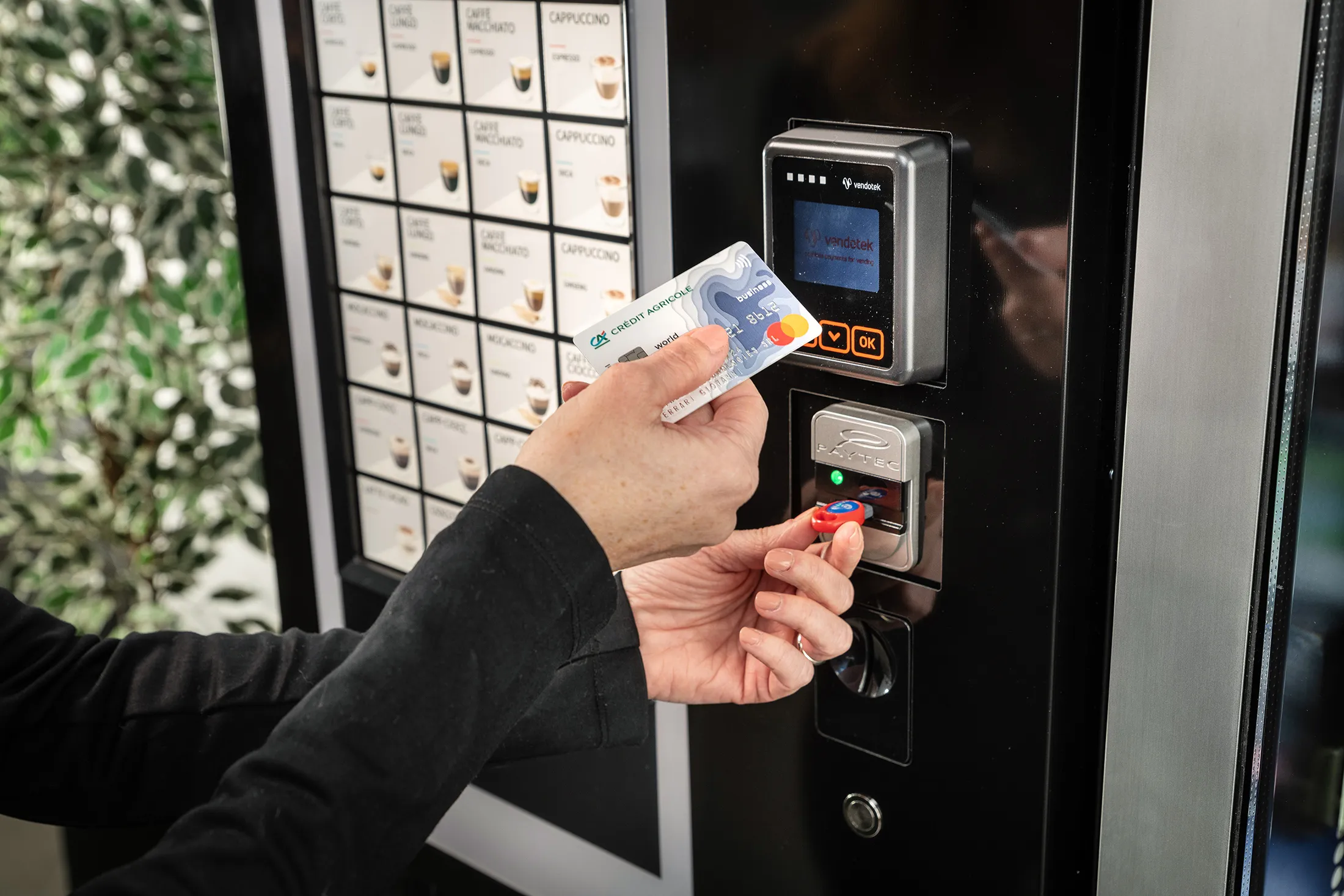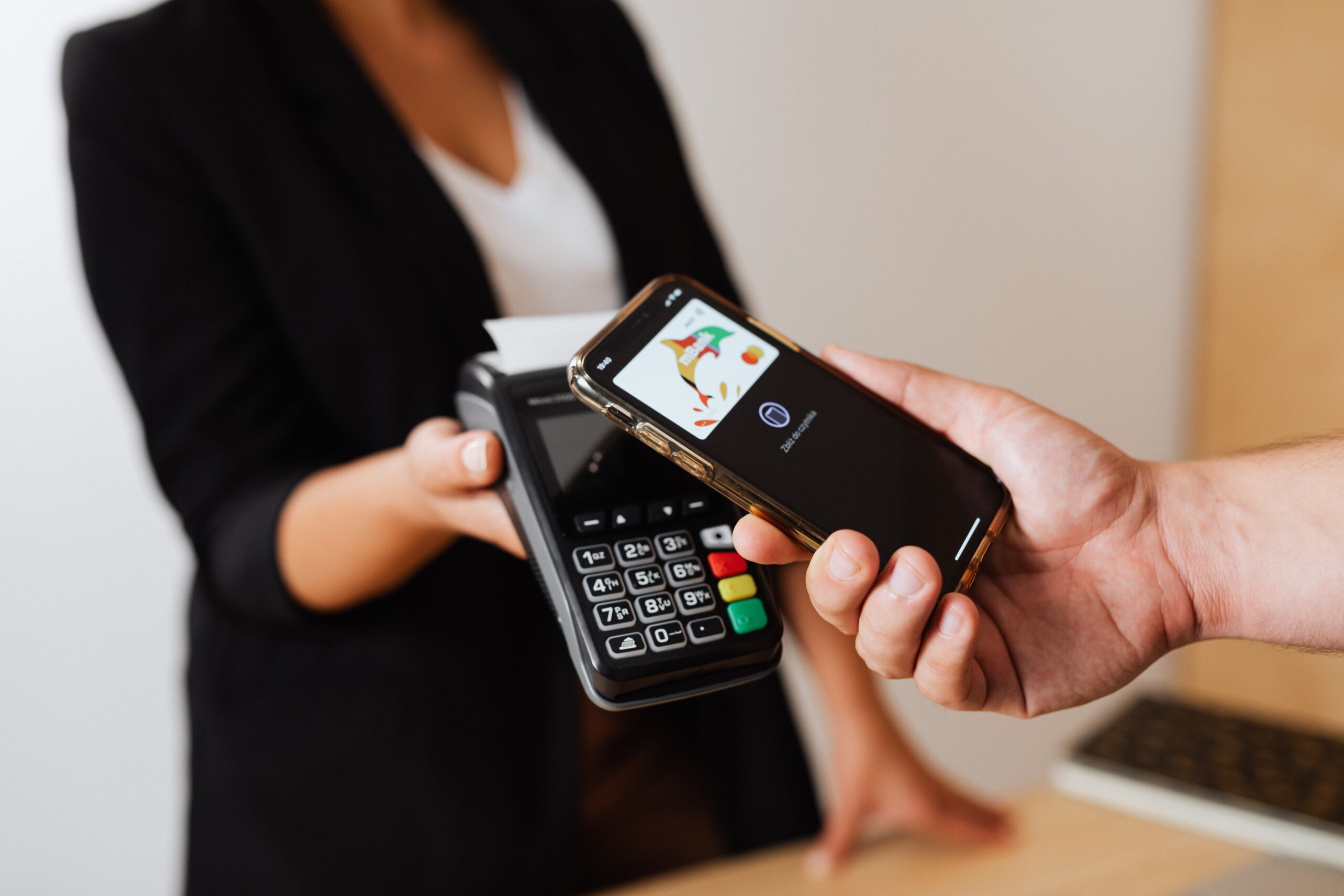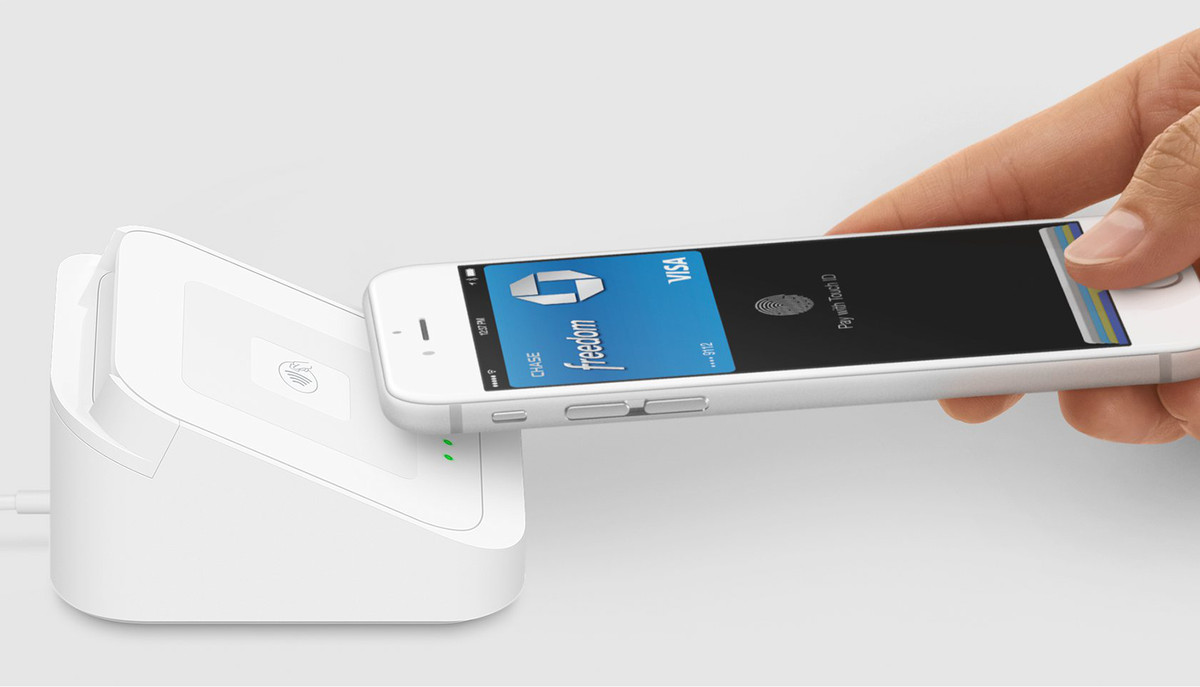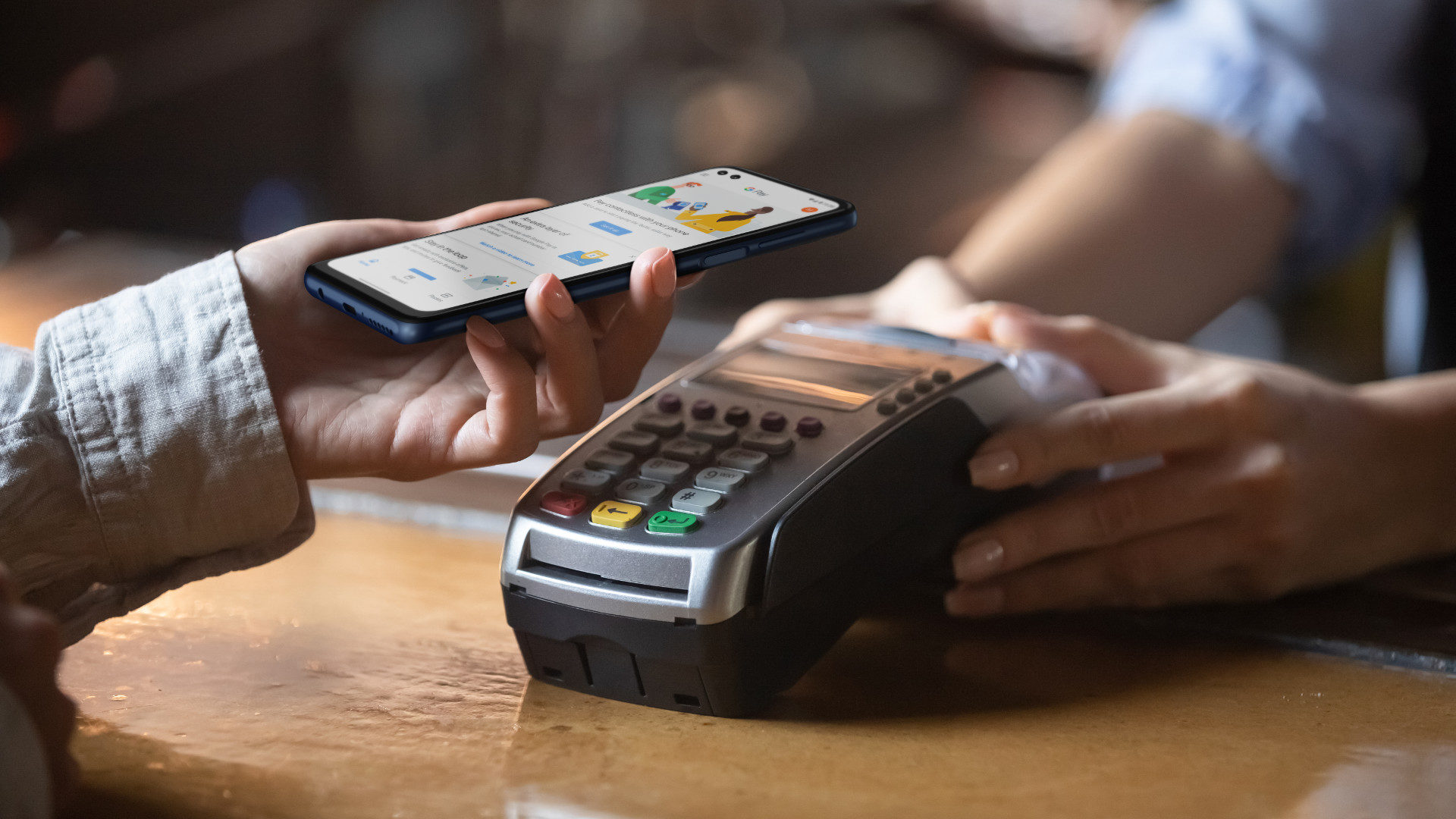Banks
When it comes to accepting NFC payments, banks play a crucial role in facilitating these transactions. As NFC technology continues to gain popularity, many banks have started to integrate NFC capabilities into their payment systems. This allows their customers to make contactless payments using compatible smartphones, smartwatches, or other NFC-enabled devices.
With NFC payments, bank customers can conveniently tap their devices on point-of-sale terminals to complete transactions without the need for physical cards or cash. This method of payment offers a seamless and secure way to make purchases.
Major banks around the world have embraced NFC technology and partnered with payment networks to offer their customers access to contactless payment options. These banks work closely with card issuers to provide NFC-enabled debit and credit cards, allowing their customers to tap and pay at merchants that accept NFC payments.
Furthermore, banks often provide their customers with dedicated mobile banking apps that support NFC payments. These apps allow users to link their bank accounts or credit cards to a digital wallet, which can then be used for contactless payments.
It’s important to note that not all banks support NFC payments, so it’s essential to check with your bank to ensure that your account is eligible for this payment method. Additionally, some banks may require you to activate NFC capabilities on your device or download a specific banking app to make contactless payments.
Overall, banks play a vital role in facilitating NFC payments by offering their customers access to contactless payment options, supporting NFC-enabled cards, and providing mobile banking apps that support NFC payments. As NFC technology continues to evolve, it’s likely we’ll see more banks embracing this convenient and secure payment method.
Credit Card Companies
Credit card companies also play a significant role in accepting NFC payments. These companies work closely with banks and payment networks to provide their customers with NFC-enabled credit cards, allowing them to tap and pay at merchants that accept NFC payments.
With NFC technology, credit card companies aim to provide their customers with a seamless and secure payment experience. Contactless payments offer convenience and speed at the point of sale, as customers can simply tap their cards on compatible payment terminals to complete transactions.
Major credit card companies, such as Visa, Mastercard, and American Express, have embraced NFC technology. They have collaborated with banks to issue NFC-enabled credit cards that can be used for contactless transactions. These credit cards contain a built-in NFC chip that allows them to communicate with POS terminals, enabling secure and efficient payment processing.
In addition to traditional credit cards, credit card companies have also introduced mobile payment platforms. These platforms, such as Apple Pay, Google Pay, and Samsung Pay, leverage NFC technology to enable contactless payments using smartphones and smartwatches.
By linking their credit card information to a mobile payment app, customers can make NFC payments by simply tapping their devices on compatible payment terminals. These mobile payment platforms provide an extra layer of security by using tokenization technology to protect users’ card information.
With the increasing adoption of NFC technology, credit card companies are continuously working on expanding their network of merchants that accept contactless payments. They collaborate with payment processors, retailers, and technology providers to ensure widespread acceptance of NFC payments in various industries.
It is important for credit cardholders to ensure that their credit cards are NFC-enabled. If not, they can contact their credit card company to request a replacement for a contactless card. This will allow them to take advantage of the convenience and security offered by NFC payments.
In summary, credit card companies play a crucial role in accepting NFC payments. They offer NFC-enabled credit cards and mobile payment platforms, allowing customers to make contactless transactions at merchants that accept NFC payments. As NFC technology continues to evolve, credit card companies are committed to expanding acceptance and providing customers with the benefits of seamless and secure contactless payments.
Mobile Payment Platforms
Mobile payment platforms have revolutionized the way we make transactions, and NFC technology has played a significant role in their success. These platforms utilize NFC capabilities to enable contactless payments using smartphones and smartwatches.
Leading mobile payment platforms such as Apple Pay, Google Pay, and Samsung Pay have integrated NFC technology into their apps, allowing users to link their credit or debit cards to a digital wallet. This digital wallet can then be used for contactless payments at merchants that accept NFC payments.
With mobile payment platforms, users can make a payment by simply tapping their devices on compatible payment terminals. The NFC chip in the device communicates with the point-of-sale terminal, securely transmitting the payment information and completing the transaction within seconds.
One of the advantages of mobile payment platforms is the added layer of security they provide. Instead of using the actual card information, these platforms utilize tokenization technology to generate a unique token for each transaction. This ensures that the user’s card details are not compromised during the payment process.
In addition to NFC-enabled smartphones, some mobile payment platforms also support NFC-enabled smartwatches. Users can add their cards to their smartwatch and make payments by holding it near the payment terminal, without the need to carry a physical card or smartphone.
Mobile payment platforms are continuously expanding their network of merchants that accept NFC payments. They collaborate with payment processors, retailers, and financial institutions to ensure widespread acceptance of contactless payments.
It is worth noting that not all merchants accept mobile payment platforms or support NFC payments. Therefore, it is essential for users to look for the compatible contactless payment symbol or inquire if the merchant accepts mobile payments before attempting an NFC transaction.
Overall, mobile payment platforms have simplified the payment process by leveraging NFC technology. They offer users a convenient and secure way to make contactless payments using their smartphones or smartwatches. As NFC technology continues to evolve, mobile payment platforms are expected to further enhance the adoption of contactless payments in the future.
Retailers
Retailers play a vital role in accepting NFC payments and are key drivers of the widespread adoption of this payment method. With NFC technology becoming more prevalent, many retailers have upgraded their point-of-sale (POS) systems to support contactless payments.
Accepting NFC payments allows retailers to offer their customers a convenient and seamless payment experience. Rather than swiping a card or handling cash, customers can simply tap their NFC-enabled devices, such as smartphones or contactless cards, on the payment terminal to complete the transaction.
When it comes to NFC payment acceptance, retailers are divided into two categories: brick-and-mortar stores and e-commerce businesses.
Brick-and-mortar retailers typically invest in NFC-enabled payment terminals to provide contactless payment options to their customers. These terminals can communicate with consumers’ NFC-enabled devices and securely process the transactions. Retailers also display the contactless payment symbol at checkout areas, indicating that they accept NFC payments.
E-commerce businesses, on the other hand, provide NFC payment options on their websites or mobile apps. They integrate with payment gateways that support NFC transactions, allowing customers to make contactless payments online. Customers can complete their purchases by tapping their NFC-enabled devices or using mobile payment platforms like Apple Pay or Google Pay.
Not all retailers accept NFC payments, so it’s important for consumers to look for the contactless payment symbol or inquire about NFC acceptance before attempting a contactless transaction. However, as the value and convenience of NFC payments become more apparent, an increasing number of retailers are adapting their payment systems to accommodate this technology.
In addition to traditional retailers, smaller businesses and independent merchants can also benefit from NFC payment acceptance. With the rise of mobile payment platforms, such as Square and PayPal Here, even small businesses can transform their smartphones or tablets into NFC-enabled payment terminals, expanding their payment options and improving the customer experience.
Overall, retailers play a crucial role in accepting NFC payments. By embracing this technology, they provide their customers with a more convenient and secure payment method. As NFC technology continues to gain traction, more retailers are expected to adopt contactless payment options to enhance the overall shopping experience.
Restaurants
Restaurants have become increasingly accepting of NFC payments as this technology provides a quick and convenient way for customers to settle their bills. With NFC-enabled payment options, patrons can simply tap their devices on the payment terminal to complete the transaction, eliminating the need for cash or physical credit cards.
Adopting NFC payment technology allows restaurants to streamline their payment processes, reduce wait times, and enhance the overall dining experience for their customers. By offering contactless payments, restaurants can cater to the growing number of customers who prefer the ease and speed of tap-and-go transactions.
For customers, NFC payments in restaurants provide a hassle-free experience. They no longer need to worry about carrying cash or handling physical cards during their meal. Instead, they can simply tap their smartphones or contactless cards on the payment terminal to settle their bills, reducing the time spent at the cash register.
In addition to the convenience factor, NFC payments also offer enhanced security. Payment information is securely transmitted via tokenization, reducing the risk of card skimming or fraud. This gives customers peace of mind knowing that their financial data is protected during the payment process.
As the demand for contactless payments continues to rise, more restaurants are investing in NFC-enabled payment terminals. Whether it’s fast food chains, casual dining establishments, or upscale restaurants, NFC technology is being integrated into their point-of-sale systems to accommodate tap-and-go payments.
Mobile payment platforms, such as Apple Pay, Google Pay, and Samsung Pay, have also gained popularity in the restaurant industry. These platforms allow customers to link their payment accounts to their smartphones and use them to make NFC payments. Restaurants that have embraced mobile payment platforms provide an additional level of convenience to customers who prefer using their phones for transactions.
It’s important to note that not all restaurants accept NFC payments, so it’s advisable for customers to check with the establishment beforehand. However, as the benefits of NFC payments become more apparent, more restaurants are expected to adopt this technology to meet the evolving needs and preferences of their customers.
In summary, restaurants are increasingly accepting NFC payments to provide a convenient and secure payment method for their customers. With the integration of NFC technology into their point-of-sale systems, restaurants can enhance the dining experience by reducing wait times and offering a seamless payment process. As NFC technology continues to advance, it is likely that more restaurants will embrace contactless payment options to keep up with consumer demands.
Supermarkets
Supermarkets have embraced NFC technology to provide their customers with a more convenient and seamless shopping experience. By accepting NFC payments, supermarkets allow shoppers to make contactless transactions by simply tapping their NFC-enabled devices, such as smartphones or contactless cards, on the payment terminal.
With NFC payments in supermarkets, customers can save time at the checkout counter. Instead of fumbling for cash or inserting their cards into the chip reader, they can complete their purchases quickly and securely by tapping their devices. This not only speeds up the payment process but also reduces the need for physical contact, which has become increasingly important in the current health-conscious climate.
Supermarkets benefit from accepting NFC payments by improving operational efficiency. The streamlined payment process allows for faster customer throughput and shorter lines at the cash registers. Additionally, NFC payments offer increased security as payment details are securely transmitted via tokenization, minimizing the risk of card skimming or fraud.
Many supermarkets also offer loyalty programs that can be easily integrated with NFC payments. By linking their loyalty cards or reward accounts to their NFC-enabled devices, customers can automatically earn points or receive discounts during their contactless transactions. This seamless integration enhances customer loyalty and encourages repeat business.
Major supermarket chains have invested in NFC-enabled payment terminals to accommodate contactless payments. These terminals communicate with customers’ NFC-enabled devices, ensuring reliable and secure transactions. Supermarkets often display the contactless payment symbol at checkout areas, indicating that they accept NFC payments.
In addition to NFC-enabled devices, supermarkets are also adapting to mobile payment platforms. Customers can link their payment accounts to mobile payment apps like Apple Pay or Google Pay and make NFC payments using their smartphones. This provides an extra level of convenience for shoppers who prefer to use their mobile devices for transactions.
While most supermarkets now accept NFC payments, it is recommended for customers to check if their local grocery store supports this payment method. Signs or displays at the checkout area will indicate whether NFC payments are accepted.
Overall, NFC payments have revolutionized the way supermarkets handle transactions. By accepting NFC payments, supermarkets provide customers with a quicker, more secure, and contactless payment method. As NFC technology continues to evolve, it is likely that more supermarkets will embrace this payment option to meet the growing consumer demand for convenience and efficiency.
Gas Stations
Gas stations have embraced NFC payments as a convenient and efficient way for customers to pay for fuel. By accepting NFC payments, gas stations provide drivers with a contactless payment option, eliminating the need for physical cards or cash.
With NFC technology, customers can simply tap their NFC-enabled devices, such as smartphones or contactless cards, on the payment terminal to initiate the transaction. This streamlined process saves time at the pump and makes refueling a hassle-free experience.
Accepting NFC payments at gas stations offers several benefits. First and foremost, it provides a faster and more convenient method of payment. Customers no longer need to insert their cards or enter PIN numbers; they can complete their transactions quickly by tapping their devices on the payment terminal.
NFC payments also enhance the security of transactions at gas stations. Payment information is transmitted securely using tokenization, reducing the risk of skimming or fraud. This gives customers peace of mind knowing that their financial information is protected during the payment process.
In addition to NFC-enabled devices, many gas stations support mobile payment platforms. Drivers can link their payment accounts to mobile payment apps like Apple Pay or Google Pay and make NFC payments using their smartphones. This provides added convenience and flexibility for customers who prefer using their mobile devices for transactions.
While most gas stations now accept NFC payments, it’s always advisable to check if the specific gas station supports this payment method. Look for the contactless payment symbol or signs at the pump that indicate NFC payment acceptance.
Not only do gas stations accept NFC payments for fuel, but they may also offer additional convenience store items that can be purchased using NFC technology. This allows customers to make contactless payments for snacks, beverages, or other items they may need during their pit stop.
Overall, accepting NFC payments at gas stations has transformed the refueling experience. With contactless payments, customers benefit from the speed, convenience, and security of NFC technology. As NFC adoption continues to grow, it is likely that more gas stations will embrace this payment method to provide a seamless and efficient payment experience for their customers.
Public Transportation Systems
Public transportation systems around the world have started accepting NFC payments as a convenient and secure method for passengers to pay their fares. With the integration of NFC technology, commuters can use their NFC-enabled devices, such as smartphones or contactless cards, to make contactless payments for their public transportation journeys.
NFC payments offer several benefits for both passengers and public transportation systems. Firstly, NFC payments provide a seamless and quick way to pay fares. Instead of fumbling for cash or purchasing separate physical tickets, commuters can simply tap their devices on the NFC reader at the entry or exit points to pay for their rides.
Accepting NFC payments in public transportation systems also improves efficiency and passenger flow. With contactless payments, there is no longer a need for passengers to queue at ticket machines or interact with ticketing agents, reducing wait times and congestion at stations and stops.
NFC payments enhance security for both passengers and transportation systems. By utilizing tokenization technology, sensitive payment information is securely transmitted during the transaction, reducing the risk of fraud or unauthorized access to personal and financial data.
Many public transportation operators have implemented contactless payment systems that accept NFC payments. These systems, often integrated with mobile ticketing apps, allow passengers to purchase and use digital tickets or passes by tapping their devices on the designated NFC readers.
Furthermore, some cities have implemented open-loop systems that accept NFC-enabled credit/debit cards or mobile payment platforms like Apple Pay or Google Pay. This allows passengers to use their preferred payment method without the need for separate transportation-specific cards or apps.
It’s important for passengers to check if their local public transportation system supports NFC payments. Typically, information regarding NFC payment acceptance can be found on the transportation operator’s website or through their official app.
Overall, accepting NFC payments in public transportation systems makes the fare payment process more convenient and efficient for commuters. With the increasing adoption of NFC technology, it is expected that more cities and transportation operators will embrace contactless payment options to enhance the passenger experience and improve the overall efficiency of public transportation systems.
Ticketing Services
Ticketing services have evolved with the advent of NFC technology, enabling users to conveniently purchase and access tickets using their NFC-enabled devices. Whether it’s for movies, concerts, sporting events, or other forms of entertainment, NFC payments have transformed the ticketing experience for customers.
NFC payments in ticketing services offer numerous advantages. Firstly, it provides a seamless and efficient ticketing process. Instead of waiting in line or printing physical tickets, users can simply tap their NFC-enabled devices, such as smartphones or contactless cards, on the ticketing terminal or gate scanner to access their tickets. This not only saves time but also reduces the need for paper waste.
When it comes to online ticketing, NFC payments allow users to securely purchase tickets using their mobile payment platforms such as Apple Pay or Google Pay. By linking their payment accounts to these platforms, users can easily make NFC payments when purchasing tickets from websites, mobile apps, or ticketing platforms.
For venues and event organizers, accepting NFC payments offers increased convenience and security. The ticketing process becomes more streamlined, reducing the need for physical tickets or printed barcodes. Additionally, NFC payments utilize tokenization technology, ensuring that sensitive payment information is securely transmitted during the transaction.
Many ticketing service providers, event venues, and entertainment establishments have implemented NFC-enabled ticketing systems. This allows customers to store their tickets digitally on their NFC-enabled devices, eliminating the need to carry physical tickets. Attendees simply need to present their devices for scanning at the event or venue entry points.
Furthermore, NFC payments have also enabled contactless mobile ticket transfer capabilities. Users can transfer their digital tickets to others by tapping their devices together, making ticket sharing and gifting a breeze.
It’s important for customers to check if the ticketing service or venue supports NFC payments before making a purchase. Information regarding NFC payment acceptance can often be found on the ticketing service’s website or mobile app.
In summary, NFC payments have revolutionized ticketing services, providing users with a seamless and convenient way to purchase, access, and transfer tickets. With increased adoption of NFC technology, it is expected that more ticketing service providers and venues will embrace contactless payment options, improving the overall ticketing experience for customers.
Online Marketplaces
Online marketplaces have embraced NFC payments as a secure and efficient payment option for customers purchasing goods and services through their platforms. NFC technology allows users to make contactless payments using their NFC-enabled devices, such as smartphones or contactless cards, when shopping on these platforms.
NFC payments offer several benefits for users of online marketplaces. Firstly, it provides a convenient and streamlined checkout process. Instead of manually entering payment information or dealing with cumbersome payment gateways, users can simply tap their devices on the payment terminal or use mobile payment platforms like Apple Pay or Google Pay to complete their transactions with a few taps.
By accepting NFC payments, online marketplaces enhance the security of transactions. Tokenization technology ensures that sensitive payment information is securely transmitted, reducing the risk of unauthorized access or fraud. Users can shop with peace of mind, knowing that their financial data is protected during the payment process.
NFC payments are particularly beneficial for mobile users who make purchases on-the-go. With a simple tap, they can easily make payments without the need to enter lengthy card details or navigate through complex payment screens on small mobile screens.
Leading online marketplaces have integrated NFC payment options directly into their platforms. They provide users with a seamless payment experience by offering a variety of payment methods, including NFC-enabled smartphones and contactless cards. Users can securely link their payment accounts or use mobile payment platforms to complete transactions with just a few taps.
In addition to providing convenience and security, NFC payments also encourage impulse purchases. With the ease of tapping to make a payment, users are more likely to go through with the purchase, resulting in increased conversion rates for online marketplaces.
It’s important to note that not all online marketplaces accept NFC payments. Users should look for the contactless payment symbol or check the payment options available during the checkout process. If NFC payments are supported, users can take advantage of the speed and convenience this payment method offers.
In summary, online marketplaces have embraced NFC payments to provide users with a convenient, secure, and efficient payment option. With leading platforms integrating NFC technology into their systems, users can tap their devices to complete transactions, reducing friction in the checkout process. As NFC technology continues to advance, it is likely that more online marketplaces will incorporate contactless payment options to enhance the shopping experience for their customers.







